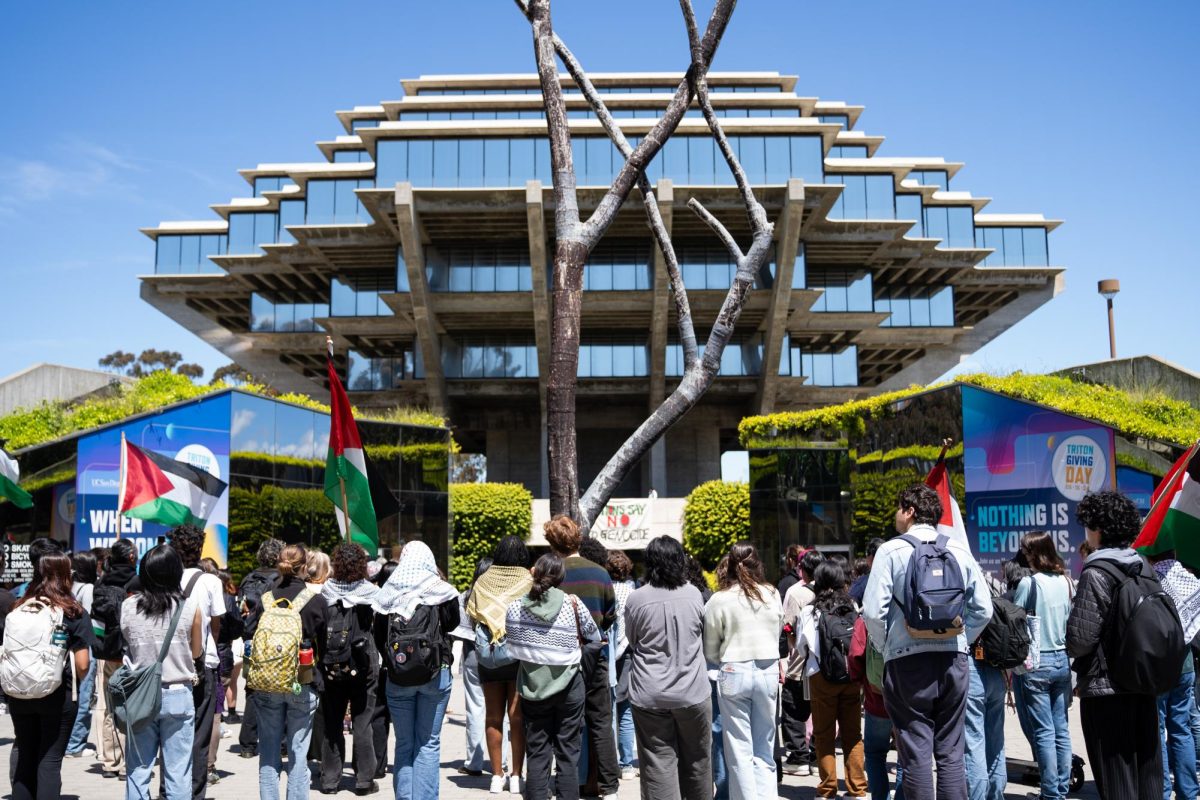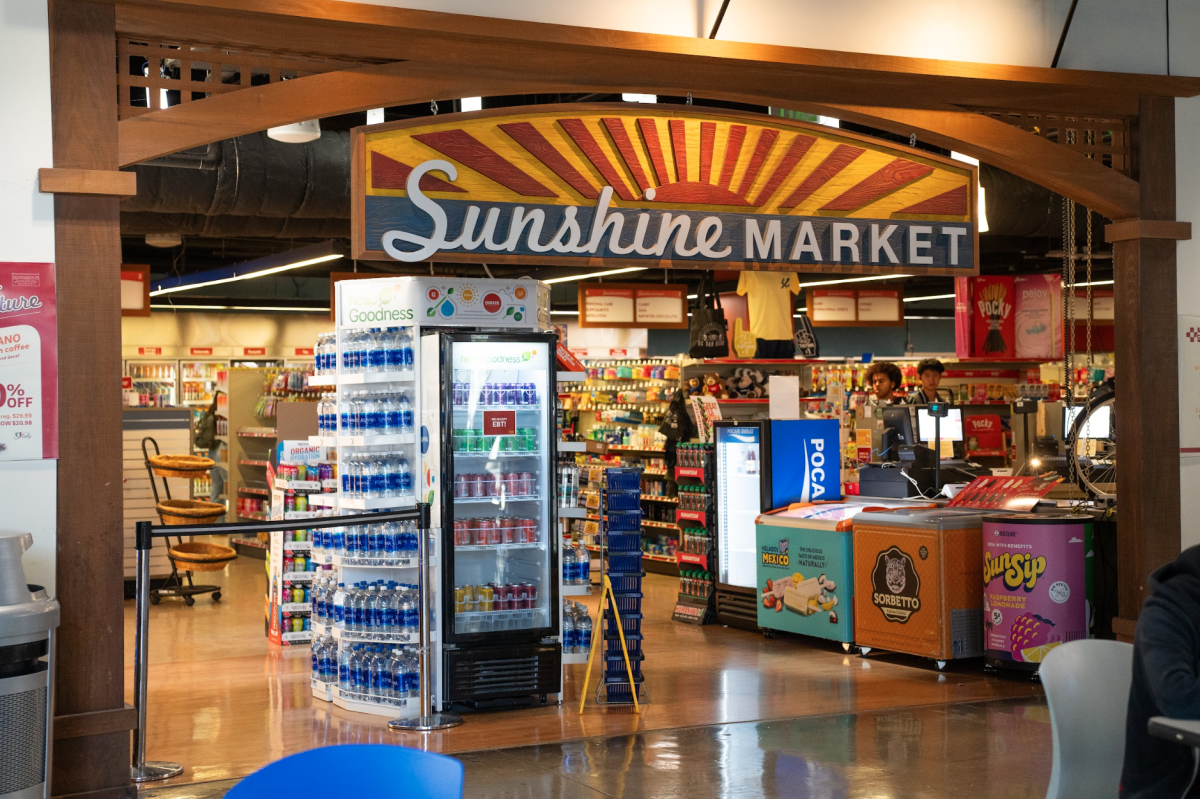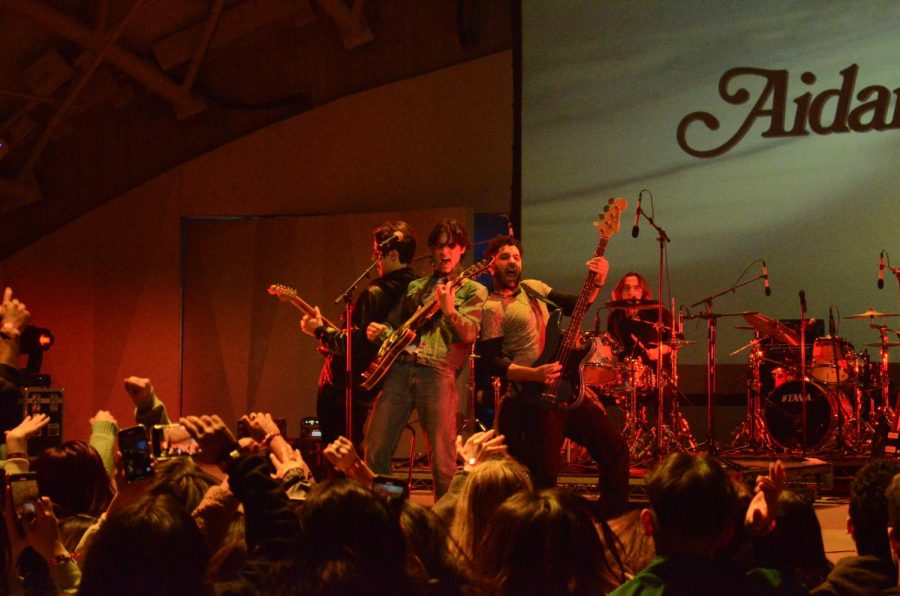A new Price Center tabling policy, which aims to curb the massive crowding of the plaza seen in the first few weeks of the quarter, sections off 12 8-foot by 8-foot spaces, rather than allowing student organizations to set up anywhere on a first-come, first-served basis.
University Centers has introduced a new tabling policy in Price Center plaza in an effort to relieve crowding, adhere to fire codes and limit the presence of student organizations.
The newly assigned areas filled quickly this fall, often before 5 a.m., leaving several organizations without space to advertise.
In the past, organizations have showed up as early as 4 a.m. to compete for limited space and patio furniture. Any open area in the plaza, including directly in front of the fountain, box office and UCSD Bookstore, became an advertising area for the organizations, consisting mostly of fraternities and sororities recruiting for their rush periods. Large Greek letters, some as tall as 12 feet, were placed on Price Center lawn and elsewhere around the plaza; stereos competed for airspace and fliers detailing rush events littered the ground.
The new policy surprised most organizations arriving during rush period to set up tables. Blue tape and numbers marked off the new areas, with some areas reserved and some left open. Several organizations were unable to set up due to lack of space and a policy that bans the use of Price Center furniture for events. During rush week, organizations resorted to several impromptu methods to deal with the new policy, including moving the tape and camping out overnight.
“The first three days [of rush] were bumpy,” said John Payne, the scheduling and event services manager for University Centers.
Payne decided to implement the new policy to adhere to fire codes and address complaints from Price Center customers about the lack of space and furniture. The specified areas should also curb the tendency for organizations to construct huge displays, taking up even more valuable space, Payne said.
“We allow it to be a free-for-all as a courtesy,” Payne said. Although the new policy does dictate the location and amount of space available, rush week tabling will continue to be reservation-free.
The normal policy during any given week allows for five spots in the plaza to be reserved, but the rule has never been enforced during the high-demand periods. The few spots that were reserved this quarter were left open to organizations that had reserved spots during spring quarter, before the new rush-period policy was created.
“I don’t like the free for all. … There is no security [overnight] out there … [and] it’s just not safe,” Student Organization Leadership Office Greek Organization Adviser Jennifer R. Johnson said.
Payne added that he has no problem with students camping out for spots, as long as it doesn’t interfere with scheduled events and maintenance.
The new policy will also be in effect during the spring rush periods, and the spaces will be open to the organizations that get to them first. Payne said the policy is better for everyone, and that he “admires the competition” among organizations for the limited space.
Although there are enough spaces for the traditional Greek organizations to set up, several organizations unaffiliated with the Interfraternity Council or Panhellenic Association, such as preprofessional fraternities or culturally focused organizations, also use the Price Center for their rushes. These organizations participate in a rush period that stretches over two weeks, which makes space scarce, especially during Price Center performances and the quarterly vendor fair.







